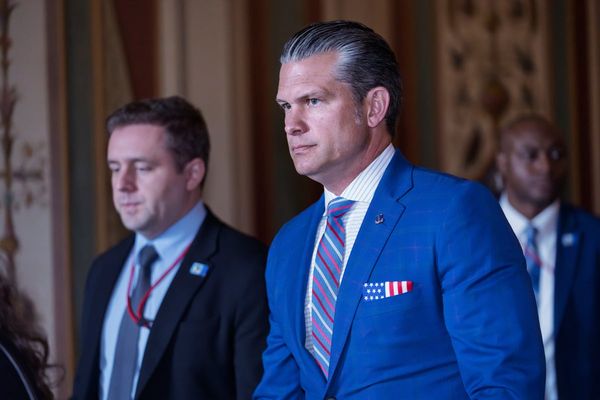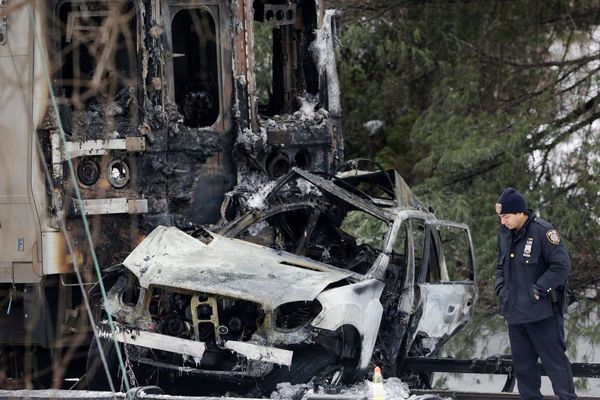
Between the 1988 Brazilian Grand Prix and 1991 Spanish Grand Prix, a span of 62 races, the Leyton House March Formula 1 team paired Ivan Capelli with Mauricio Gugelmin. Over those four years the pair shared plenty of heartache but also moments of triumph. The stalwart pair logged four podiums, three of which came from Capelli, who needs no second invitation to name Gugelmin as his favourite team-mate.
“We were really sharing the project of Leyton House,” says Capelli, for whom 1988 was his first season with a full-time team-mate since he’d been paired with Bernard Santal at Coloni on his way to the 1984 European Formula 3 title.
“We were fighting and helping to achieve the good results and trying to get to the top. In 1991 or in 1989 when the car was really poor, we were just working together to find the way to put together the best results.
“The four years that we shared together we were really sharing everything; from the technical points, the life that we were doing around the world. In good and bad times, we were sharing the same things. I remember very well how strong we were in terms of friendship and at the same time pushing each other to the limit. In the end we were happy with the results that we could achieve.”
The 1986 Formula 3000 champion had been March’s sole driver upon his full-time arrival to the grand prix circus in 1987, the first F1 campaign for the Bicester company since 1982. But the addition of Gugelmin for 1988 to drive Adrian Newey’s Judd-powered 881 coincided with the team’s emergence as a player that at times even troubled the dominant McLaren MP4/4s. Capelli was third at Spa and second at Estoril, while Gugelmin contributed a fourth place at Silverstone as March ended the year sixth in the constructors’ championship.
“The car was really quick, especially in the medium and fast corners,” remembers Capelli, who at Suzuka had briefly passed Alain Prost for the lead before grinding to a halt. “Obviously we were just sharing the good times in ’88.”

As Capelli was already established at the team partially set up by Robin Herd and his mentor Cesare Garibaldi, who had run Capelli to the F3000 title at his Genoa Motorsport team, Gugelmin naturally had some catching up to do. But Capelli says the Brazilian, who had won the 1985 British Formula 3 championship in a Ralt and raced for its works team in F3000 against the Marches in 1987, never resorted to underhand tactics to get the team on-side. Instead, they frequently traded stories of scraped elbows and bruised knuckles, such were the famously tight dimensions of their cockpits.
“The relationship really worked,” says Capelli. “It was also interesting to have a team-mate to compare the performances. Adrian Newey drew a very, very small car for us, and the performances were good, so we were enthusiastic for the project but at the same time it was really hard for us to keep the limit for the race because of the very small cockpit. We couldn’t have a ‘dish’ [steering wheel] too big because we then couldn’t sit inside the car!
“He was not political. We had a very honest relationship. Obviously at the end of the day we were closing the visor before the start of the race and we were competing against each other, but without any back-stabbing political attitude or so on. Just enjoying life and racing together.”
"We were quite similar in terms of understanding the car and driving the car to the limit. We didn’t have differences so important or so crucial in the set-up"
Ivan Capelli
However, 1988 would prove the closest to the summit the team managed during the Capelli/Gugelmin era. It was sixth on supertimes in 1988, but slipped to seventh in 1989 – the CG891 proving difficult to drive and find a set-up sweetspot. Things were even worse in 1990 as it slumped to 10th, before a slight improvement to eighth in 1991.
Reliability woes meant the team’s constructors’ ranking didn’t always tally up with the car’s potential. Gugelmin’s podium at the 1989 Interlagos curtain-raiser with the year-old car was the only points score that year as Leyton House – now owned outright by its main benefactor Akira Akagi – slipped to 12th in the championship. In his 2017 autobiography, Newey refers to the season as an annus horribilis.
Despite a disastrous start to 1990, frequently failing to qualify which Newey blames on problems with the diffuser that had resulted from a bum steer at the University of Southampton’s flawed wind tunnel, Leyton House ended the year seventh in the constructors’ table thanks to Capelli’s Paul Ricard podium in the first race for its vastly updated package. Gugelmin had run second to Capelli for much of the race before his engine expired with a little over 20 laps to go.
The revised diffuser was the last act for Newey before his departure for Williams amid belt-tightening instigated by the financial worries of Akagi and the prominence afforded to his newly-installed financial director Simon Keeble, who became acting team principal when Ian Phillips was sidelined by meningitis.

There were no more failures to qualify, but sixth at Spa for Gugelmin was the team’s only other points score. If there was a positive to be taken, it was that Capelli and Gugelmin were unified on what they wanted from the car and provided a known quantity on the occasions when parts weren’t up to scratch.
“We were quite similar in terms of understanding the car and driving the car to the limit,” says Capelli. “If I remember well, we didn’t have differences so important or so crucial in the set-up.
“It’s true that in that period, some parts of the car were crucial for the performances. In a private test we were doing at Estoril, I was for some reason nearly one second and a half slower than Mauricio and I was not able to understand why. We were doing different changes in the set-up – tyres, putting downforce on the rear wing, and then other tricks, but the difference was always there.
“When the two cars are stopped in the garage, Adrian came to us and said ‘what’s the problem’ and I tried to explain the problem that I had. And Mauricio was there saying he didn’t have this problem. Adrian looked at us and said, ‘okay, so let’s change the front wings’ and just changing the front wing, I was 1.5 seconds quicker than Mauricio and he was back on my lap time!
“In that period, it was so important to have the best parts of the car – the front wing, the flat bottom, the rear wing. The construction at the time was not so precise and like now, that was part of the game that we had.”
The 1991 season was not a successful one and Leyton House returned to 12th in the constructors’ table with only a single point earned by Capelli in Hungary. Amid the team’s worsening financial situation, with Akagi implicated in financial scandal, the Italian was stood down for Karl Wendlinger at the final two races of 1991 to bring the curtain down on his long spell alongside Gugelmin.
“Having Mauricio was a good thing for me, for the team, for everybody,” says Capelli. “Mauricio was a very honest man. And he probably had the same kind of feeling with his family, with his brother coming to the races, Stella the wife being always here, we could have a very good atmosphere.”

As the March team struggled on for one more year with ever-dwindling coffers, its change of ownership unable to abate its slide down the grid, its loyal drivers went their separate ways. For 1992 Capelli earned what should have been his big break at Ferrari, but it was a miserable year in the difficult twin-floor F92 while Gugelmin struggled at Jordan with heavy and underpowered Yamaha engines. He endured a pointless season that peaked with seventh at Imola.
"Having Mauricio was a good thing for me, for the team, for everybody. Mauricio was a very honest man"
Ivan Capelli
As Gugelmin headed for a fruitful career in America, finishing fourth in the 1997 CART Indycar standings, Capelli resurfaced at his old team-mate’s squad in 1993 but departed Jordan after just two difficult rounds.
Latterly a regular in GT racing, he now works as an F1 pundit on Italian TV with Sky.








